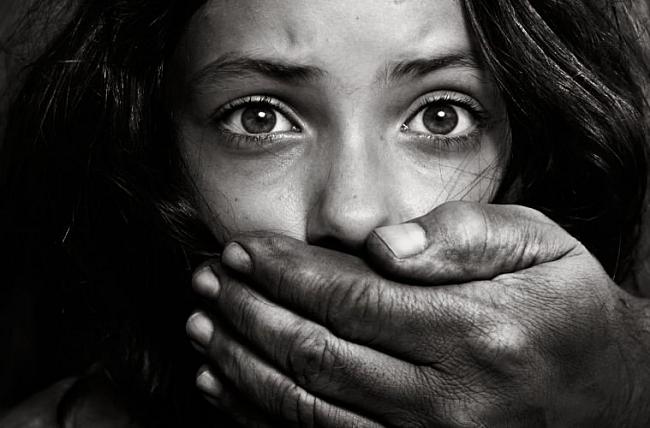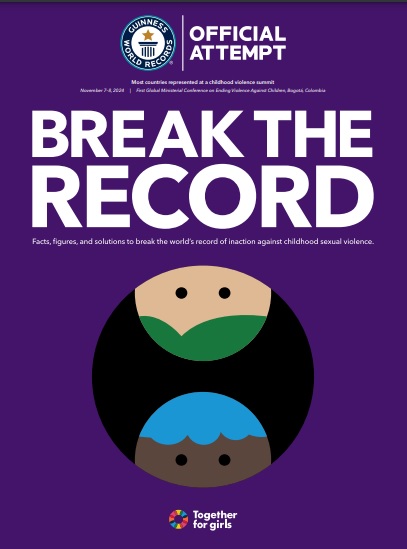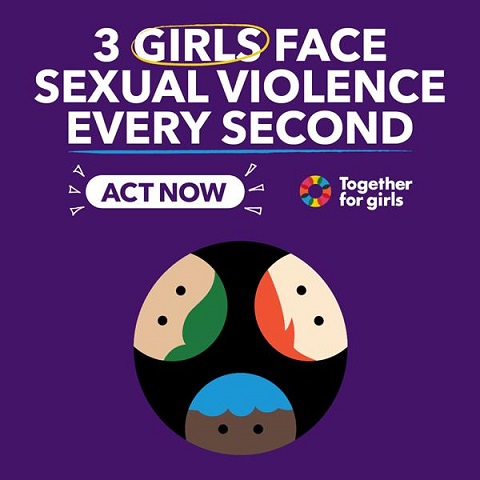Together for Girls Launch ‘Break the Record’ in record-breaking attempt to end childhood sexual violence
AMN / WEB DESK
A global research has revealed that in the past 12 months, 82 million girls and 69 million boys have suffered some form of sexual violence, approximately 3 girls and 2 boys per second. The data was compiled by Together for Girls in collaboration with the World Health Organization (WHO), Georgia State University, China Agricultural University, U.S. Centers for Disease Control and Prevention (CDC), and University of Edinburgh.
The data comprised representing 193 countries and relevant to the experiences of 2.4 billion young people.
In a first-of-its-kind approach, Together for Girls has created a book called ‘Break the Record’ to measure and understand childhood sexual violence and offer a practical framework to end it. This effort is part of a wider Break the Record campaign supported by influencers and advocates around the world including the Brave Movement, a survivor-led global advocacy movement to end childhood sexual violence and special initiative of Together for Girls. The campaign will also attempt a GUINNESS WORLD RECORDS™ title for the most countries represented at a childhood violence summit at the Global Ministerial Conference on Ending Violence Against Children taking place in Bogotá, Colombia on November 7-8, 2024.

The Break the Record book features additional world-first numbers: UNICEF’s first-ever global and regional estimates, which Together for Girls and research partners fed into revealing that 1 in 5 girls and 1 in 7 boys will experience some form of sexual violence before their 18th birthday.
Together for Girls CEO and Brave Movement founder, Dr Daniela Ligiero says: “Sexual violence against children (SVAC) is persistent, widespread, and devastating, yet we know there are proven solutions to prevent it. We also know that SVAC happens in the dark. One of the key reasons for its proliferation is the lack of global measurement.
While some governments and organizations measure on a national or regional level, we have yet to see rigorous measures on a global scale. This lack of global measurement has meant no effective global solutions. With this world-first effort, measuring the experiences of 1.5 billion young people, we hope to transform people’s understanding of SVAC and spur governments to take action.”

“So today, ahead of the world’s first violence against children ministerial, we are calling on governments and individuals to take action, to see that there is hope if we all share a vision for the future – a world in which survivors have a seat at the table, and the collective efforts of governments, civil society, and the private sector combine to ensure that every child grows up safe and free from fear and violence. A world everyone has access to prevention, healing, and justice.”
The book also features the Out of the Shadows Index (OOSI), as well as data from Childlight: Global Child Safety Institute at the University of Edinburgh, which finds that over 300 million children under the age of 18 have been affected by online child and sexual exploitation and abuse in the last 12 months. According to the Into the Light Index, 1 in 8 children globally have been subjected to online solicitation and 1 in 8 children have experienced taking, sharing, and/or exposure to sexual images and videos in the last 12 months. The Into the Light index consolidates data from national surveys, research, and practice to estimate the prevalence of online child sexual abuse and exploitation.
These forms of childhood sexual violence, both contact and non-contact, have serious emotional, health, and psychosocial impacts on children and youth, including into adulthood.

60 million girls face sexual assault going to school each year
UNDERSTANDING ABUSE IN SCHOOLS
Children deserve safe spaces to learn: An estimated 246 million girls and boys experience violence in and around schools every year, according to UNGEI. Girls are particularly vulnerable: The Global Women’s Institute finds that 60 million girls experience sexual assault going to school each year. In some countries girls are more likely to experience violence than become literate.
Intersectional barriers such as gender, race, age, disability status, and sexual identity often prevent children, especially from marginalized groups, from attending school altogether and increase the risk of violence for those who do attend. LGBTQI+ students experience school violence and bullying at a rate between three and five times higher than their non-LGBTQI+ peers, according to UNESCO.
This violence hinders learning: It can decrease self-esteem, reduce school attendance, lower academic achievement, and – like any form of violence – has negative impacts on children’s health and well-being. Despite knowing the wide-reaching impacts of school-related gender-based violence (SRGBV), not enough is being done politically to create and implement education policies, and practically to prevent violence in schools. We need to amplify locally led solutions and hold governments and other decision-makers accountable for ensuring safe learning environments.
Youth and survivor advocates are key to preventing and responding to SRGBV: We must center those who are most affected, recognize students’ agency, and actively include them in decisions. Safe to Learn is a global initiative dedicated to ending violence in and through schools. It is inspired by the voices of young people around the world who know and experience that violence in schools stands as a huge obstacle to a better future.
We need more and better data. Policy- and decisionmakers, practitioners, and advocates need specific
quantitative and qualitative data that captures the prevalence and nature of SRGBV experienced by students, as well as drivers, including social norms and attitudes.
Existing research on SRGBV reveals that experiences and perpetration of violence vary widely based on gender, including important variations in the gendered dynamics of SRGBV across national contexts. Effective prevention requires understanding the unique and varied ways that gender roles, attitudes, and norms impact the prevalence and nature of violence in national and local contexts.
The Global Working Group to End SRGBV, convened by UNGEI and UNESCO, is a network of over 50 organizations from civil society, academia, the UN, and more committed to working collaboratively to understand and address the root causes and drivers of gender-based violence in and around schools.

